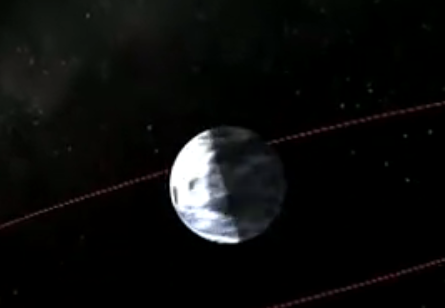By taking accurate measurements of the distance between the Earth and the Moon,
经过精确测量地球与月球之间的距离,
day after day, year after year, for nearly four decades, an incredibly precise map of the Moon's orbit has been produced.
日复一日,年复一年,经过了将近40年,一个难以置信的精确的月球轨道图已经完成。
But the results have thrown up something very odd.
然而结果提出了一些非常奇怪的现象。
The actual orbit of the Moon is different to that predicted by Newton.
月球的实际运行与牛顿的预测有所不同。
It turns out that simple Newton's laws of gravity really don't answer all of the questions.
结果很简单,牛顿的万有引力定律实际上不能回答所有的问题。
For the data that existed, it was good.
对于已经存在的数据,它是对的。
Newton really had a good formula.
牛顿确实提出了一个好的公式。

But, as we get better and better data,
但是,随着我们得到越来越多的数据,
if you use Newton's law of gravity to predict where the Moon should be, then the Moon is in the wrong place.
如果你用牛顿的万有引力定律来预测月球所处的位置,那么月球所处的位置就不对了。
Peter's results disagree with Newton's by about ten metres.
Peter所得到的结果与牛顿的预测相差有10米的距离。
That may not sound much, but it means Newton got it wrong.
听起来好象不多,但这意味着牛顿错了。
You've got to explain your observations.
你要对你的观测进行解释。
And Newton's gravitational theory just doesn't do it any more.
牛顿的引力理论恰恰没有给出进一步的解释。
The observations are so accurate that we need something else.
观测非常精确,我们需要其它的解释。












